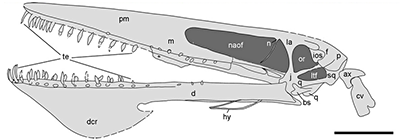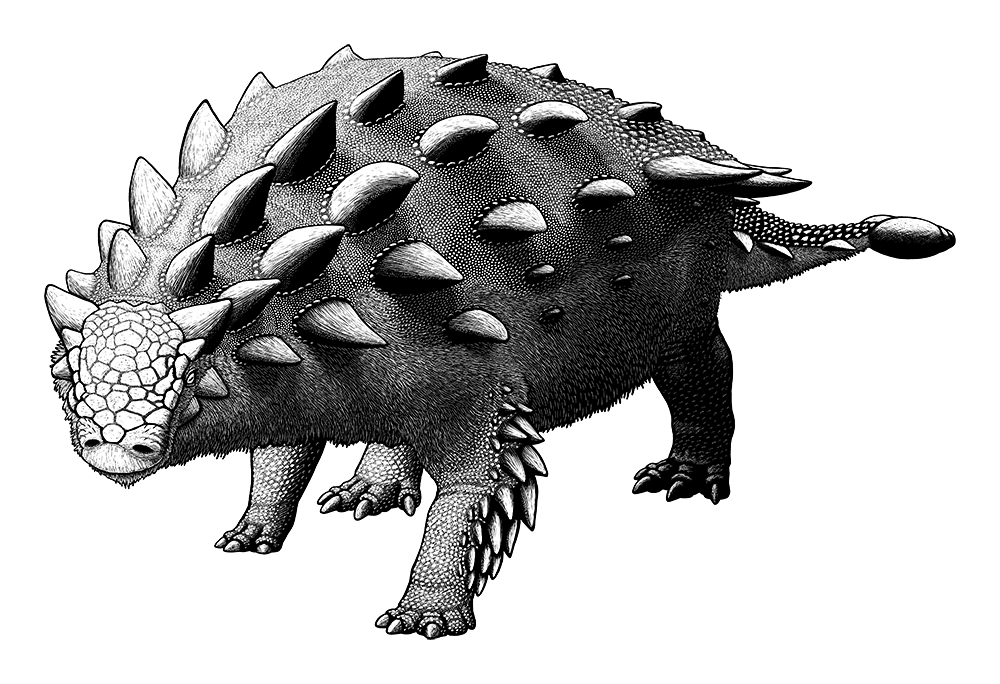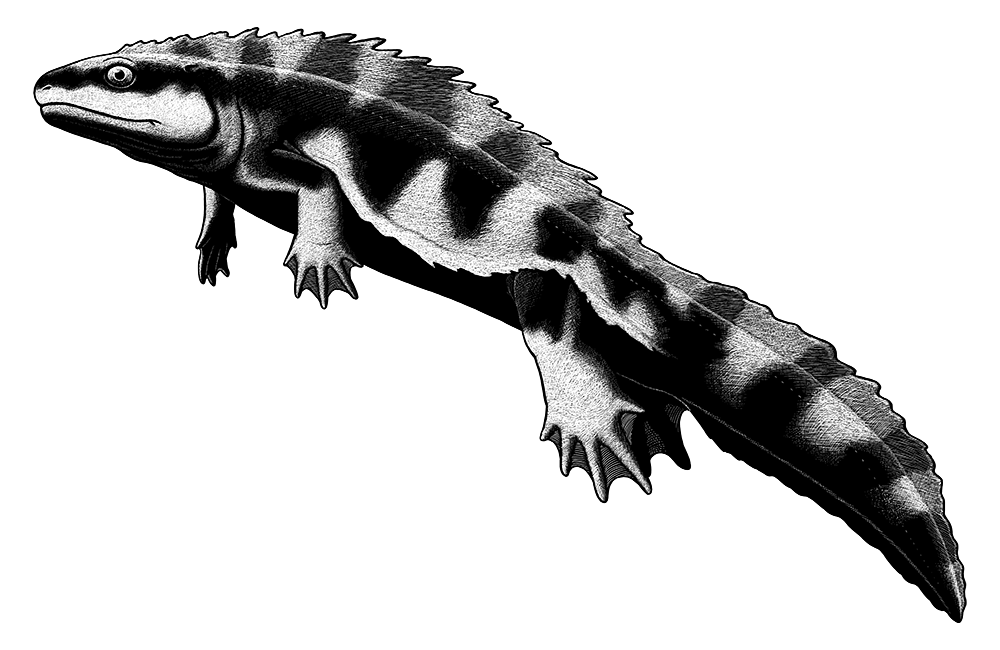Ikrandraco avatar, a pterosaur from the Early Cretaceous of China (~120 mya). Although it was close relative of the well-known Pteranodon it was much smaller, with an estimated wingspan of around 1.5m (4′11) – similar in size to a large seagull.
Its name was based on the fictional ikran creatures from the 2009 movie Avatar, in reference to similarity of the the large crests on their lower jaws.

[image source]
A hook-shaped projection at the back of the crest may have been an attachment point for a pelican-like throat pouch. The paleontologists who described Ikrandraco also suggested that its crest could have been used for skim-feeding, although this is a highly controversial idea among pterosaur specialists.



